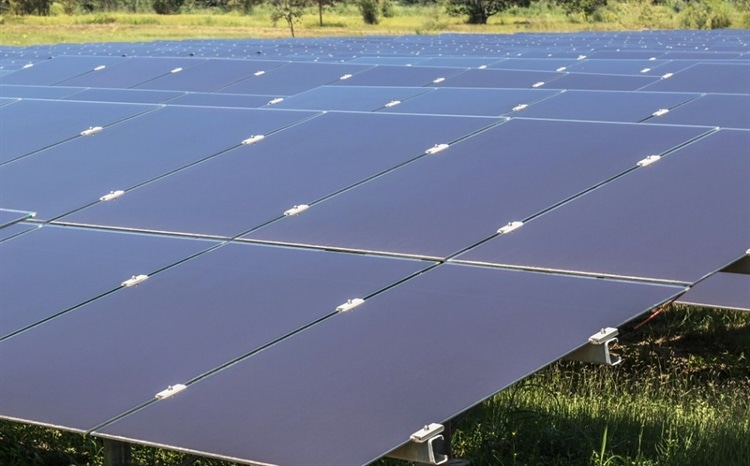
Soonthorn Wongsaita / Shutterstock
The shift from non-renewable to renewable energy is something that is happening around the world due to the strain that fossil fuels are putting on the planet. Solar panels are one of the most common choices because they are small, can be easily fabricated (compared to a hydroelectric dam for example), and there is an abundance of sunlight that hits the world each day that can be utilized. To keep up with energy demands, scientists are striving to make solar cells more efficient so that more electricity can be generated from the same amount of sunlight.
Improving the efficiency of solar cells is not the quickest of tasks, as it often involves changing the materials used in the semiconducting junction with the solar cells—as these are the reason that electricity can be generated from sunlight, because when a photon of light hits the junction, it causes the charge carriers to move and combine with each other, which produces an electrical current that can be stored.
However, there are only so many materials that can be used for these junctions, so scientists have started to do three things from a compositional perspective. The first is that they have started to use specific nanomaterials that can perform the same function as existing materials, with the main example being graphene. The second is that they have taken existing semiconducting junction materials—such as doped silicon, cadmium telluride (CdTe) and gallium arsenide (GaAs)—and made them into thin films. The third example is that both the above materials have been installed alongside quantum dots to enhance the photon-absorbing properties of the solar cells.
All the above examples, whether they are new examples or existing materials, utilize thin films. As it stands, thin-film solar cells are not as efficient intrinsically as other solar cells, but they can be used in scenarios where other solar cells cannot and can be utilized alongside conventional solar panels to provide more electricity. It could also be the case that their efficiencies become as high as traditional in the future.
One of the key benefits, naturally, is that when smaller active materials are used, the thickness of the solar cell can be reduced. For many thin materials and nanomaterials, they have much higher electrical conductivities, charge carrier mobilities and relative active surface areas, than their bulk counterparts, which is why thin-film solar cells can be much smaller but still provide a high enough efficiency to function.
Other benefits include a much lower carbon output during the production process because not as many materials are required compared to traditional solar panels. In terms of operational benefits, thin-film solar cells work much better in low-light environments and can sometimes be used in shaded areas. This is due to many thin-film solar cells being able to absorb various wavelengths along the electromagnetic spectrum—such as UV light—rather than just red light as found in conventional solar panels.
This, alongside their conformability, also means that they are more efficient at extreme sunlight angles compared to conventional solar cells. Some of the other operational benefits include better resistance to temperature build-up, better strength properties, and a lower rate of efficiency degradation at high temperatures than conventional bulkier solar panels.
Aside from your conventional materials, the use of thin films has also extended out to using thin-film organic materials. While these solar cells are known to have much lower efficiencies, they are often flexible and, in some instances, printable. This means that they can be installed on to complex geometries where conventional solar cells cannot be installed. So, while they don’t generate the most electricity, they offer a way of generating some electricity that wouldn’t otherwise be possible. They can also be used to power small devices—such as those seen on clothing.
The other type which doesn’t have as high efficiencies but can be used to absorb a lot more light than the average solar cell are the solar cells that utilize optically transparent thin films. There have been some solar panels developed that are completely transparent. Again, the efficiencies aren’t as high, but one key trick with these panels is that a mirror can be placed underneath the panel. So, with these panels, the sunlight passes through the panels, generating electricity, and then the light reflects off the mirror and passes through the solar panel a second time, generating electricity again. This means that while the efficiency per photon is not as high, they can utilize the same sun rays more than once, leading to good overall efficiencies.
References and Further Reading
Disclaimer: The views expressed here are those of the author expressed in their private capacity and do not necessarily represent the views of AZoM.com Limited T/A AZoNetwork the owner and operator of this website. This disclaimer forms part of the Terms and conditions of use of this website.